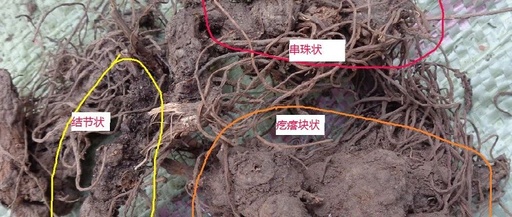Regarding the differences in characteristics between Mao Cang Zhu (Atractylodes lancea), Bei Cang Zhu (Atractylodes chinensis), and Guan Cang Zhu (Atractylodes japonica), it is often difficult to clarify in actual products. Although the Chinese Pharmacopoeia states it very clearly, the distinctions are still daunting for those without firsthand experience in identifying the source! Let us start a discussion.
The Chinese Pharmacopoeia describes:
【Characteristics】
Mao Cang Zhu is irregularly shaped, appearing as a string of beads or nodular cylindrical form, slightly curved, occasionally branched, measuring 3 to 10 cm in length and 1 to 2 cm in diameter.Its surface is gray-brown, with wrinkles, transverse grooves, and residual fibrous roots, and the top has stem scars or remnants of the stem base.It is solid, with a cross-section that is yellow-white or gray-white, scattered with numerous orange-yellow or brown-red oil chambers, which can yield white needle-like crystals upon prolonged exposure.It has a distinctive aromatic scent, with a slightly sweet, spicy, and bitter taste.
Bei Cang Zhu appears as nodular or lump-like cylindrical form, measuring 4 to 9 cm in length and 1 to 2 cm in diameter.Its surface is black-brown, turning yellow-brown when the outer skin is removed.It is relatively loose in texture, with a cross-section scattered with yellow-brown oil chambers.Its aroma is milder, with a spicy and bitter taste.
But how should we understand the distinctions between the terms “string of beads” and “nodular”?
String of beads: According to the online Chinese dictionary, it states: String of beads: to connect many beads with a string, metaphorically meaning to be connected together without interruption.String of beads refers to a shape resembling many beads connected by a string. The shape should resemble “candied hawthorn” as shown below:
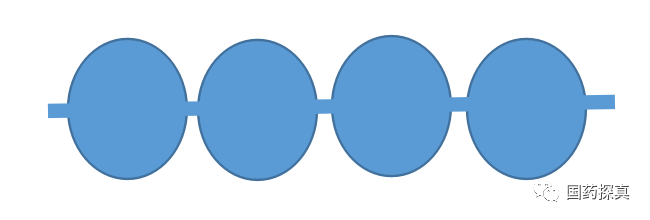
Nodule: According to the online Chinese dictionary, it states:
Nodule refers to “small protrusions on the surface or within the tissues of a biological organism.” The shape should resemble “variously sized and shaped nuts or discs stacked together,” as shown below:
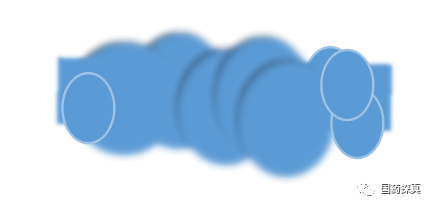
In this case, it seems easy to distinguish: pure “string of beads” must be “Mao Cang Zhu”; pure “nodular” must be “Bei Cang Zhu.” The problem is that both Mao Cang Zhu and Bei Cang Zhu can have “nodular cylindrical” shapes. If by chance both are nodular products, or if they intentionally select these nodular ones together, how can we distinguish them?Moreover, there are instances where all three shapes exist on one mountain.Below are some images for research reference:↓ String of beads
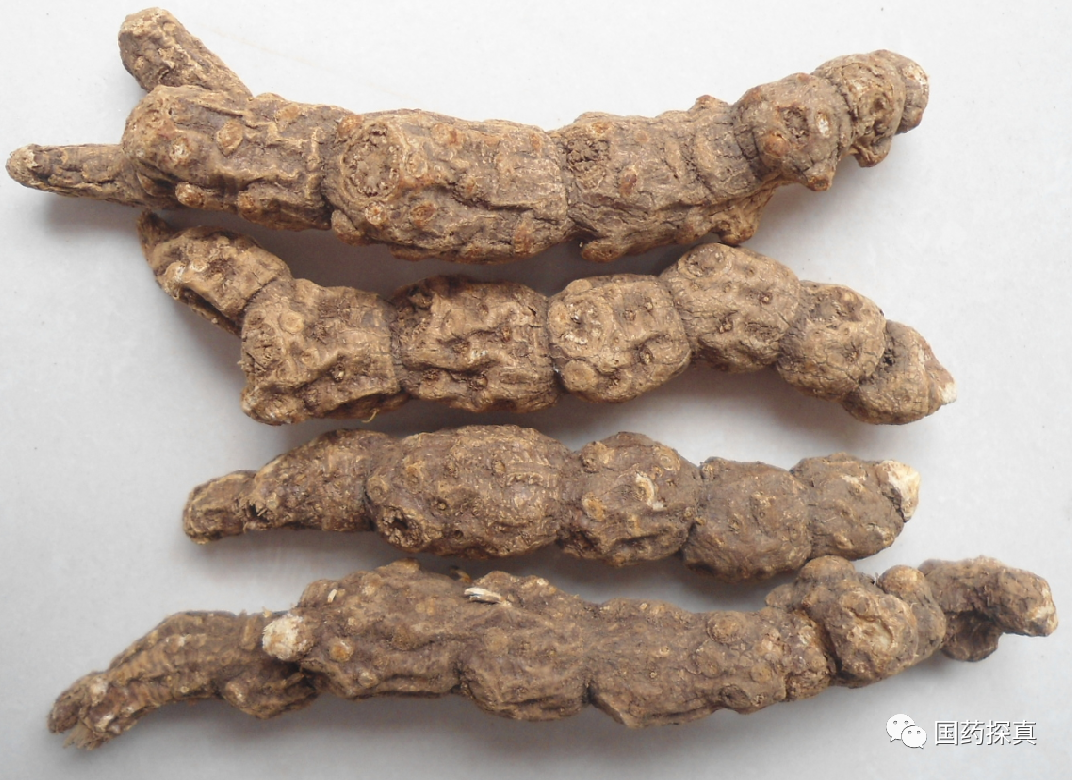
↓ Nodular
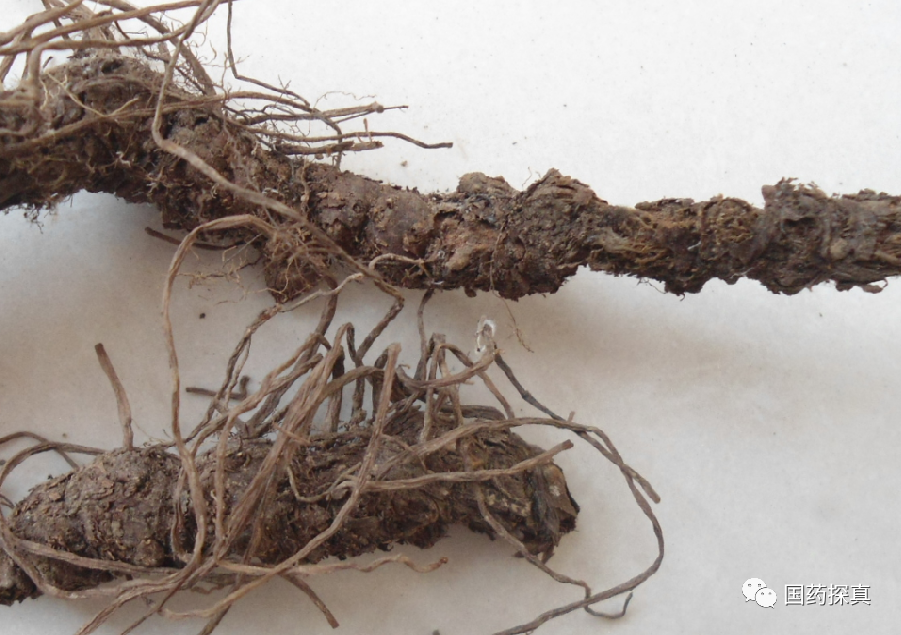
↓ Lump-like
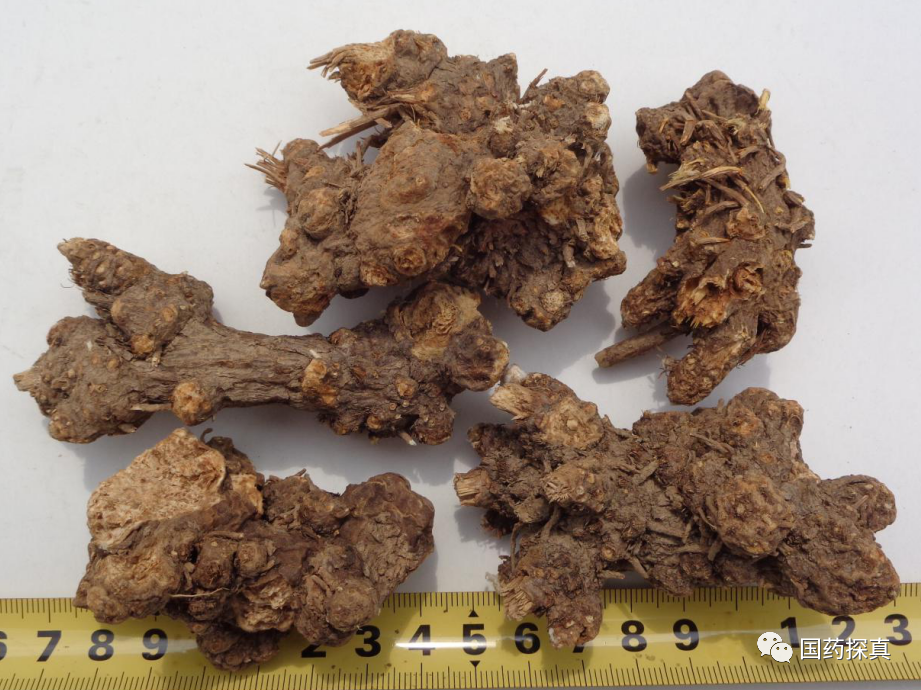
↓ In a medicinal material purchasing point in the Funiu Mountains of Henan, a farmer sells medicinal materials, showing the phenomenon of having string of beads, nodular, and lump-like forms (with fibrous roots not removed).
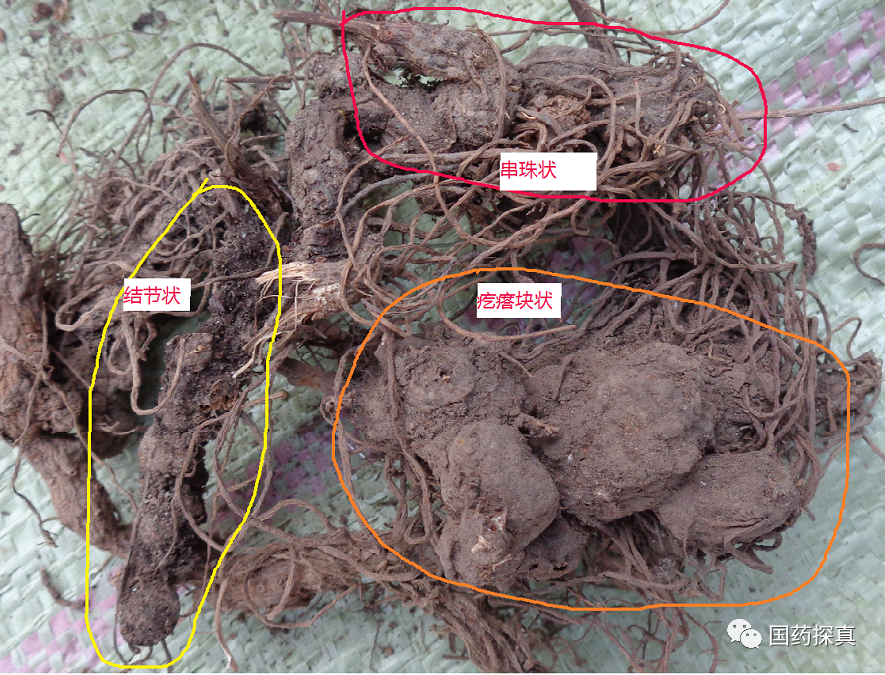
It seems that distinguishing solely by shape is indeed challenging to clarify its source! Therefore, we need to comprehensively judge from various aspects such as texture, color, aroma, cross-section, and oil chambers.
Below are the explanations of the three types from the Chinese Pharmacopoeia and the Dictionary of Chinese Medicine:
Mao Cang Zhu
【Source】 The rhizome of the plant Atractylodes lancea (Thunb.) DC. of the Asteraceae family. Harvested in spring and autumn, cleaned of soil, dried, and fibrous roots removed.
【Distribution】 Grows in shrublands and grasslands. Mainly produced in Jiangsu, Hubei, Henan, and Anhui.
【Characteristics】 Mao Cang Zhu (Southern Cang Zhu): the dried rhizome of the plant Southern Cang Zhu. It appears as an irregular string of beads or nodular cylindrical form, slightly curved, occasionally branched, measuring 3 to 10 cm in length and 1 to 2 cm in diameter. The surface is gray-brown, with wrinkles, transverse grooves, and residual fibrous roots, and the top has stem scars or remnants of the stem base. It is solid, with a cross-section that is yellow-white or gray-white, scattered with numerous orange-yellow or brown-red oil chambers, which can yield white needle-like crystals upon prolonged exposure. The cross-section does not exhibit blue fluorescence under ultraviolet light (254nm). It has a strong aroma, with a distinctive scent, and a slightly sweet, spicy, and bitter taste.
Quality is best when it is large, solid, hairless, with red spots inside, and produces white frost upon cutting.
Mainly produced in Jiangsu, Hubei, and Henan. Additionally, Zhejiang, Anhui, and Jiangxi also produce it. The best quality comes from the Maoshan area in Jiangsu, hence it is called “Mao Zhu” or “Maoshan Cang Zhu”. Those distributed in Nanjing are also called “Jing Mao Zhu” or “Jing Cang Zhu”. The products from Hubei and Jiangxi are mainly distributed in Hankou, hence also called “Han Cang Zhu”.
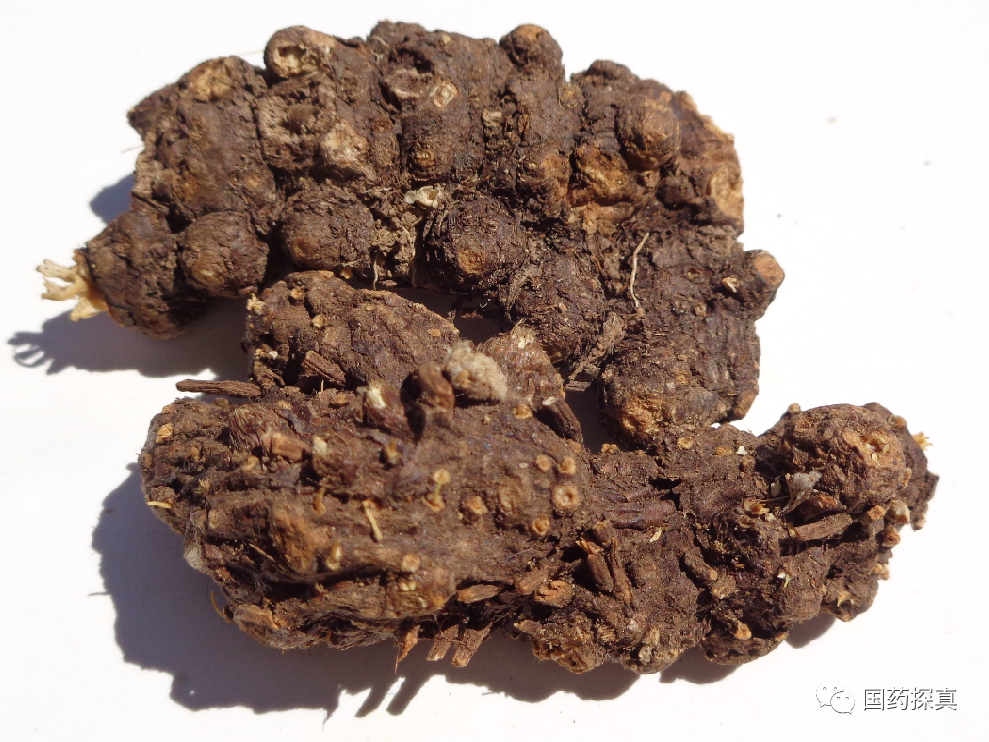
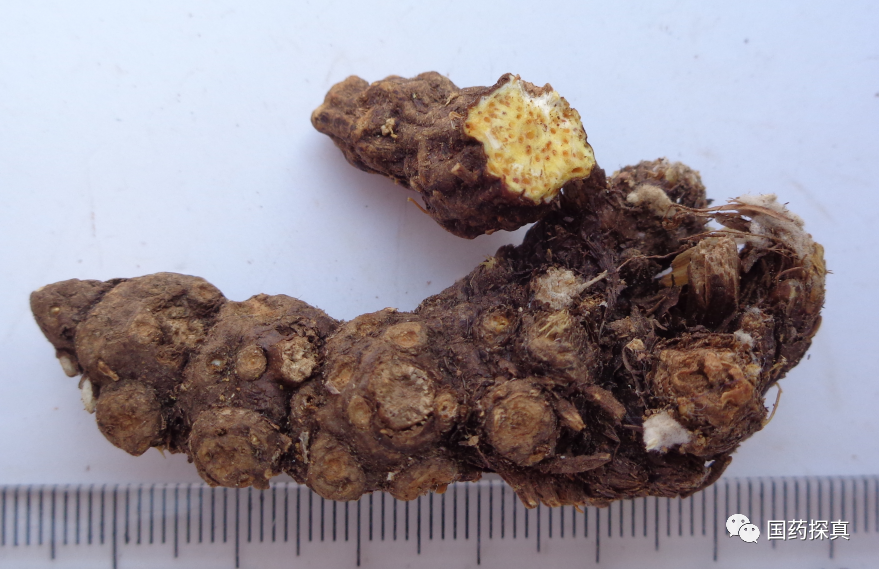
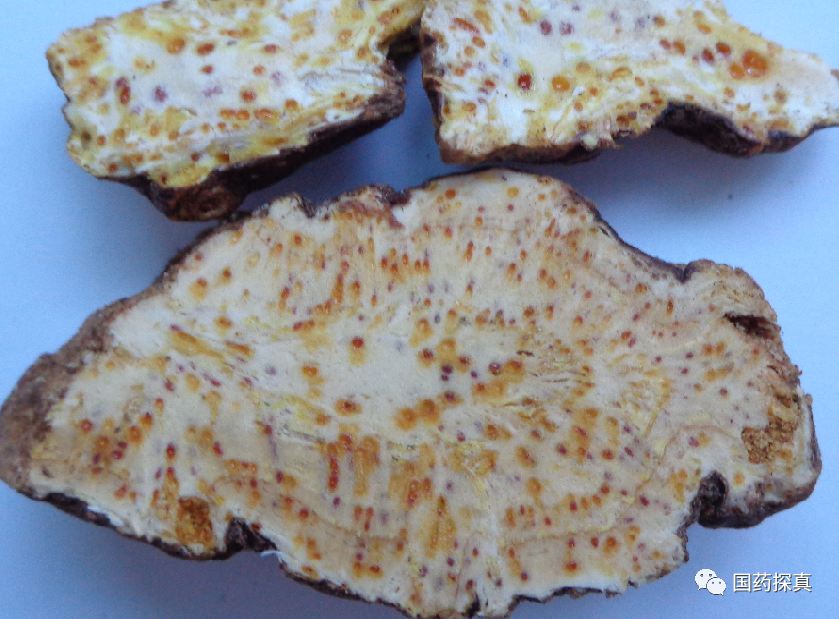
Bei Cang Zhu
Bei Cang Zhu (Mountain Cang Zhu, Gunhead Vegetable, Mountain Thorn Vegetable): the dried rhizome of the plant Atractylodes chinensis.
【Characteristics】 It appears as a lump-like or nodular cylindrical form, measuring 4 to 9 cm in length and 1 to 4 cm in diameter. The surface is black-brown, turning yellow-brown when the outer skin is removed. It is relatively loose in texture, with a cross-section scattered with yellow-brown oil chambers. Upon prolonged exposure, it can yield white needle-like crystals. It does not yield white needle-like crystals upon prolonged exposure. The cross-section exhibits blue fluorescence under ultraviolet light (254nm). Its aroma is milder, with a spicy and bitter taste.
Quality is best when it is plump, solid, hairless, and aromatic. This species is lighter and less dense than Southern Cang Zhu, with fewer oil glands, and does not yield white mold-like crystals upon cutting, and its aroma is also weaker. Its quality is inferior to that of Southern Cang Zhu.
Mainly produced in Inner Mongolia, Hebei, Shanxi, Henan, Liaoning, Jilin, and Heilongjiang. Additionally, Shandong, Shaanxi, and Gansu also produce it. The products from Hebei are mainly distributed in Tianjin, hence it is called “Jin Cang Zhu”.
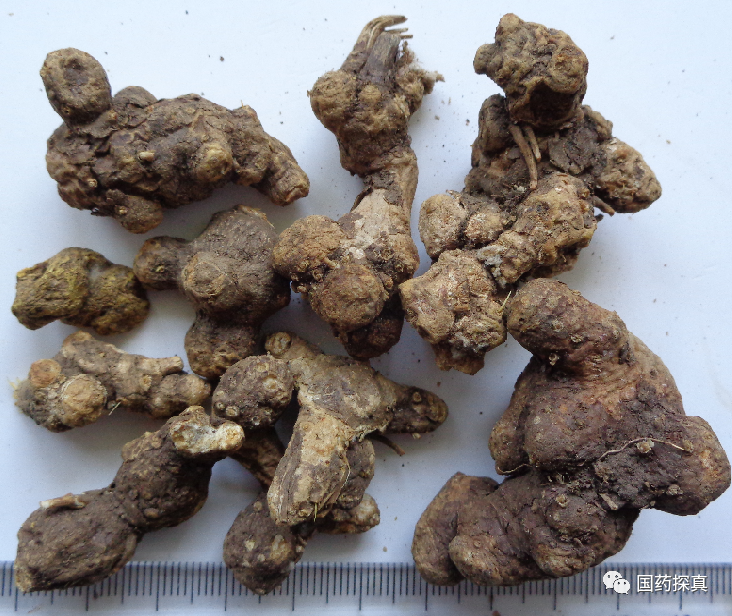
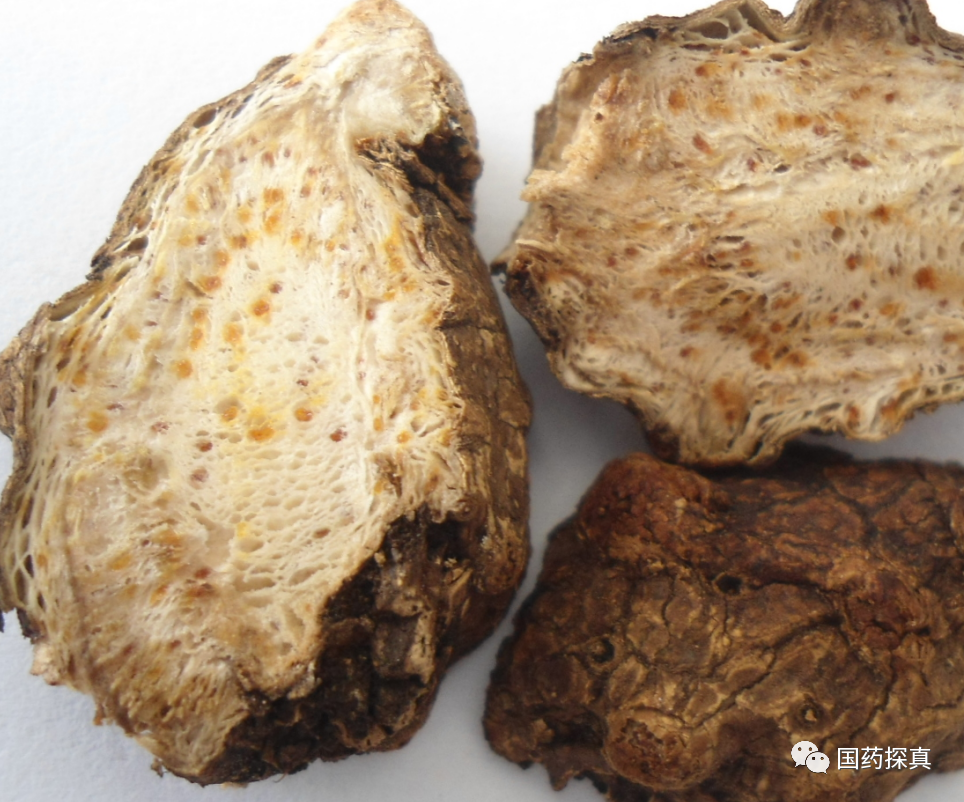
Guan Cang Zhu
【Alias】 He Cang Zhu, Dong Cang Zhu
【Source】 The rhizome of the plant Atractylodes japonica of the Asteraceae family.
【Distribution】 Grows on hillsides, under oak forests, and in shrublands. Mainly produced in Heilongjiang, Jilin, and Liaoning.
【Characteristics】 The rhizome is mostly nodular cylindrical, measuring 4 to 12 cm in length and 1 to 2.5 cm in diameter, with a deep brown surface. It has root scars and fine fibrous roots, with remnants of stem scars. It is relatively light, with an uneven cross-section and strong fibrous texture. It has a strong distinctive aroma, with a spicy and slightly bitter taste.
The following images (provided by a friend)
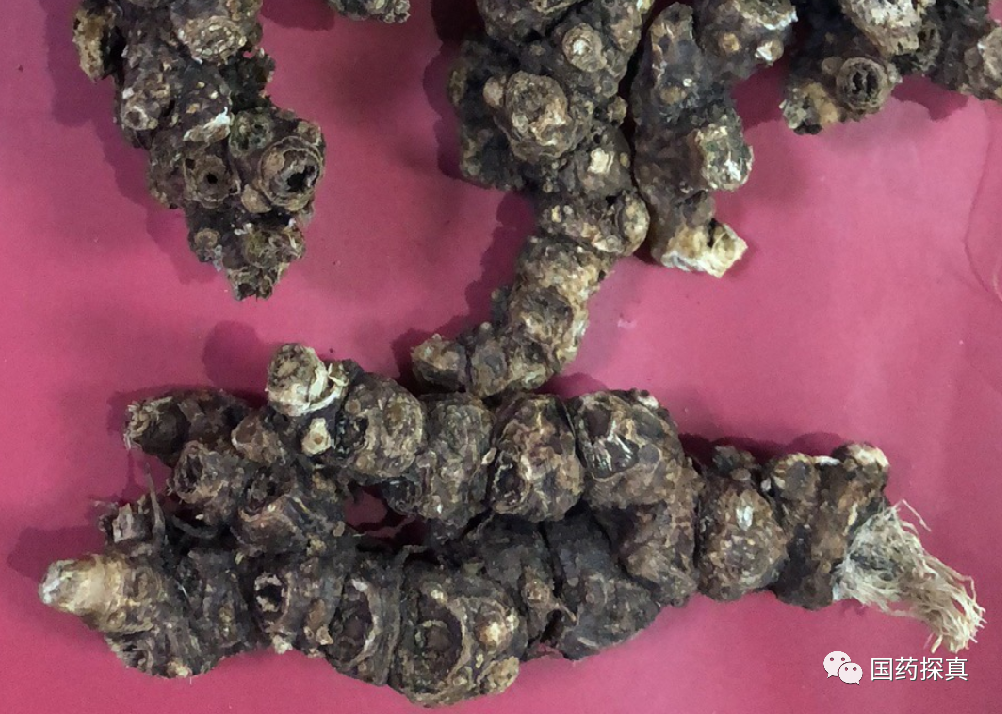
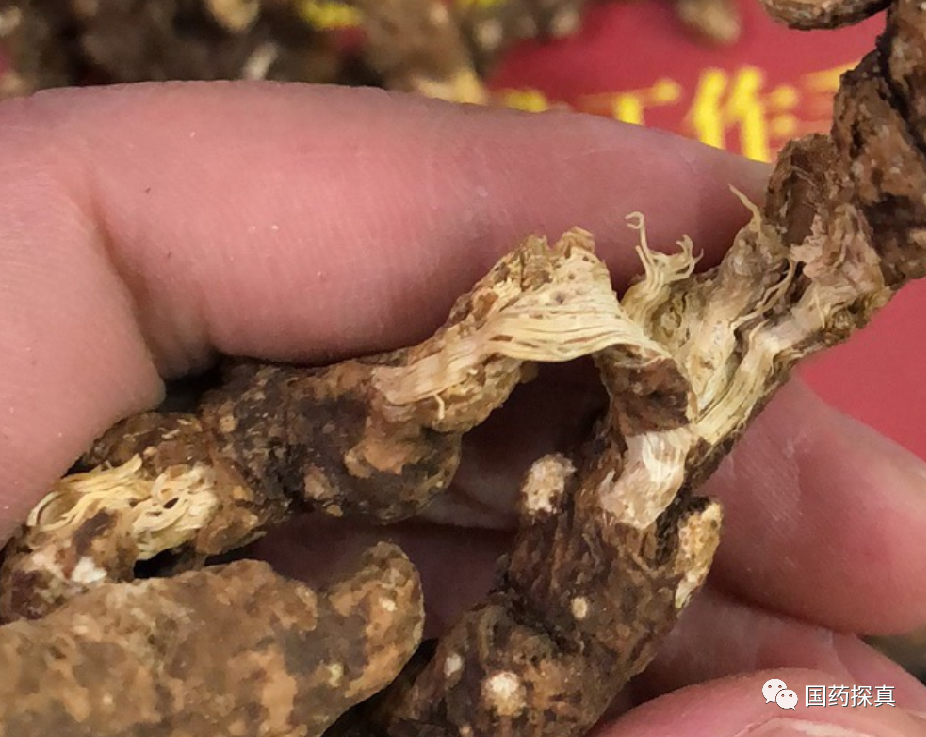
The author has summarized the observations and literature data into a table format as follows for industry guidance.
| Mao Cang Zhu | Bei Cang Zhu | Guan Cang Zhu | |
| Appearance | String of beads, nodular or lump-like | Lump-like or nodular, occasionally string of beads | String of beads, nodular or lump-like |
| Size | Long and slender | Long and slender or lump-like | Relatively long |
| Color | Gray-brown | Black-brown, yellow-brown when peeled | Deep brown, gray-brown when peeled |
| Texture | Few pores, denser and solid | Relatively loose, with obvious fissures | Light and porous, with larger net-like fissures and holes |
| Aroma | Strong aroma, slightly sweet, spicy, and bitter | Faint, spicy, and bitter | Faint, spicy, and slightly bitter |
| Cross-section | Yellow-white or gray-white | Gray-white or beige | Yellow-white |
| Oil chambers | Orange-yellow or brown-red, large and dense; turns red-brown over time | Yellow-brown, often connected in sheets | Pale yellow, very sparse |
| Fluorescence | None | Blue | Unknown |
| Others | Cross-section easily produces white needle-like crystals | Cross-section easily produces white cotton-like crystals | Strong fibrous texture |
Additionally, there is now a cultivated variety of Cang Zhu, which is larger in size, even up to twice the size of regular Cang Zhu, often appearing in clumps. It is rumored to be a hybrid of Southern and Northern Cang Zhu, or a hybrid of Mao Cang Zhu and Bai Zhu (Atractylodes macrocephala). The author mentioned in a previous article titled “Have You Seen Such Cang Zhu?” to pay attention to observation. If interested, feel free to check it out.
At the same time, we hope that colleagues and experts will leave comments and share their insights for mutual improvement!

